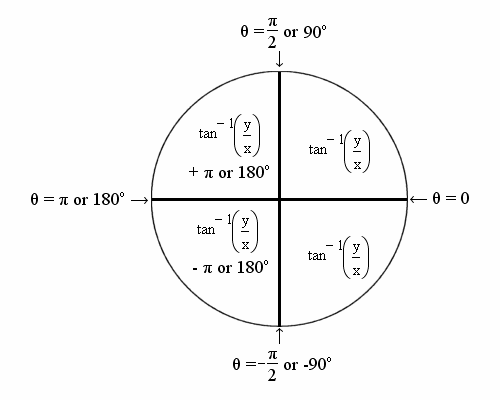Addition(a + bi) + (c + di) = (a + c) + i(b + d) |
Subtraction(a + bi) - (c + di) = (a - c) + i(b - d) |
|||||||||||||
Multiplication(r1∠θ1)(r2∠θ2) = (r1•r2)∠(θ1 + θ2)(a + bi)(c+di) = (ac - bd) + i(ad + bc) |
Division
|
| tan(a+bi) = | tan(a) + tanh(b)•i | = | sin(a)•cos(a) + i•sinh(b)•cosh(b) |
| 1 - i•tan(a)•tanh(b) | cos2(a) + cosh2(b) - 1 |
| cos-1(z) = i•ln(iz+√(1-z2)) + | π |
| 2 |
| tan-1(z) = | i | (ln(1-iz) - ln(1+iz)) |
| 2 |
| x | y | arg(x + yi) |
|---|---|---|
| >0 | ≠0 | tan-1(y/x) |
| >0 | =0 | 0 |
| 0 | >0 | 90o or π / 2 |
| 0 | <0 | -90o or -π / 2 |
| <0 | >0 | tan-1(y/x) + 180o (or π) |
| <0 | <0 | tan-1(y/x) - 180o (or -π) |
| <0 | 0 | 180o (or π) |
| 0 | 0 | does not exist |

| Have you found an error or do you want to add more
information to these pages? You can contact me at the bottom of the home page. |